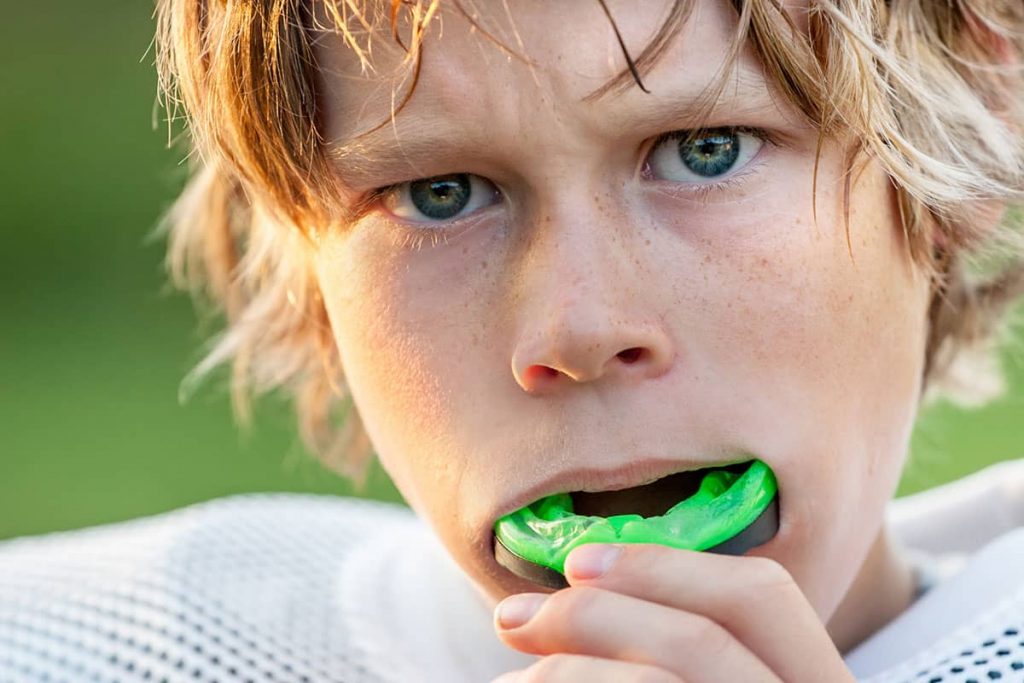Spring is in the air, and that means lots of children are turning their attention to outdoor sports, if pandemic conditions allow. How many kids? According to one estimate, roughly 40 percent of all children in the U.S. play at least one organized indoor or outdoor sport.
Dentists have an important role to play in keeping those kids safe: ensuring the aspiring baseball, lacrosse and softball stars are wearing a proper mouthguard.
Types of Mouthguards
There are three types of mouthguards, but only one kind is supported by the ADA.
Many families opt for a store-bought mouthguard that often comes in only a few (small, medium or large) general sizes. Dentists know these offer the least amount of protection and should not be used in any competitive athletic situation.
Boil-and-bite mouthguards give the appearance of being a better choice; they provide a tighter fit than a general size mouthguard. However, they, too, do not fully protect the person from injury.
Finally, there are mouthguards created by a dentist and specifically for the person wearing them. More costly for the consumer? Absolutely. The only legitimate choice? Absolutely.
Recently, Dr. Hans Stasiuk, the president of the Academy for Sports Dentistry, told ADA News that dentists must remind their patients that inferior mouthguards don’t provide protection against injury. He said, “Dentist-fitted, custom-fabricated, dual-laminate mouthguards” offer the only option young athletes have when they compete in sports.
Importance of Mouthguards
Quality mouthguards obviously protect a child’s teeth from damage.
But the benefits do not stop there. The authors of one of the more complete academic studies examining the value of mouthguards stated: “The overall risk of an orofacial injury was more than twice as great when athletes involved in many different sports were not wearing a (mouthguard) … (Mouthguards) should be used in all sport activities where there is significant risk of orofacial injury.”
A (perhaps incomplete) list of such sports include: baseball, basketball, football, hockey, lacrosse, soccer, softball, taekwondo and wrestling. In effect, any activity in which the mouth might be jarred by another athlete or the ball/puck ought to include a mouthguard.
The dental community sees the need for mouthguards, but many young athletes do not. The authors of a study appearing in Dental Traumatology reported that after surveying more than 200 young athletes, “most participants were aware of mouthguards for dental trauma prevention and considered them efficient for preventing dental injuries during sports activities, but only 94 (41%) used them.”
How Children Can Protect Their Mouthguard
MouthHealthy.org has a list of important reminders everyone who wears a mouthguard should follow. Dentists should remind their patients to
- Rinse the mouthguard before and after each use or brush with a toothbrush and toothpaste;
- Regularly clean the mouthguard in cool, soapy water;
- Make sure a dentist includes an evaluation of the mouthguard during a regular dental checkup;
- Keep the mouthguard in a sturdy container that has vents so it can dry and keep bacteria from growing;
- Never leave the mouthguard in the sun or in hot water;
- Check the fit and for signs of wear and tear.
Time for Billy and Susie to get that mouthguard and the rest of their sports equipment and go play!
Need a mouthguard? We can help!
From mouthguard to night guards, we’re focused on protecting your smile.
At First Choice Dental Lab, we create both custom-made Pro-Form mouthguards and regular custom-fit mouthguards. Both provide excellent comfort and fit while also maintaining shape and strength.
Tell your dentist to give us a try today, and we’ll help give you a reason to smile!
Need a referral for a dentist? Contact us here.



